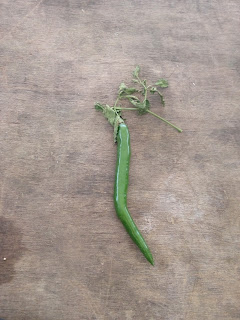Gotcha !😳 After a few weeks we have talk about the introduction of chilli, how was it started for a small or large plantation, how its market value and also the process of making chilli sauce. Actually there's a lot of thing about chilli that is very crucial for asean food especially for sure, so here i am going to conclude our good project that should be implemented by you guys out there. Well basically, the reason we choose chilli is of course about its marketability.
When we talk about marketability i am sure that on the previous day we already explain a little bit about it. Then we made some research by interviewing some of well-known experienced person that totally can give us positive feedback. Double gotcha !😁 this makes us feel very interested to do this project as a newbie in this industry of course all you need is knowledge good thinking skills to detect the marketing mix which is all those 4P'S. So lucky we are right ? yes, yes we know it !. 😏
Okay got back to our stories recently, we have touch about the marketability then shall we go to the most important part here is set up and processing the chilli. Set up will make sure you guys are thinking about the cost. Well if you had your own land i guess it should be no problem and of course it will save your costing. BELIEVE or NOT ? Well you guys gonna believe me soon when you started it. Trust me 😉. But if don't also will actually cost you less than any kind of business in terms of valueable crops, besides the duration to get the product is so fast! Oh my God like seriously😱! fascinating right . That is why we choose chilli as our business project because we see the potential, its value and its market price. Just imagine, if we can produce 10 tonnes a months with RM40 per kilogram so what do you think does it worthless or worthy? Think it wise man.
So, we have talked too much i guess and the rest has been told in the previous post. So if you guys wanna know details about the story of chilli from the beginning take your time ladies and gentlemen. Read us !😯😉. See you again.
LADIES AND GENTLEMEN, STAY TUNE FOR UPCOMING STORIES
# any question to ask you can ask😃





















